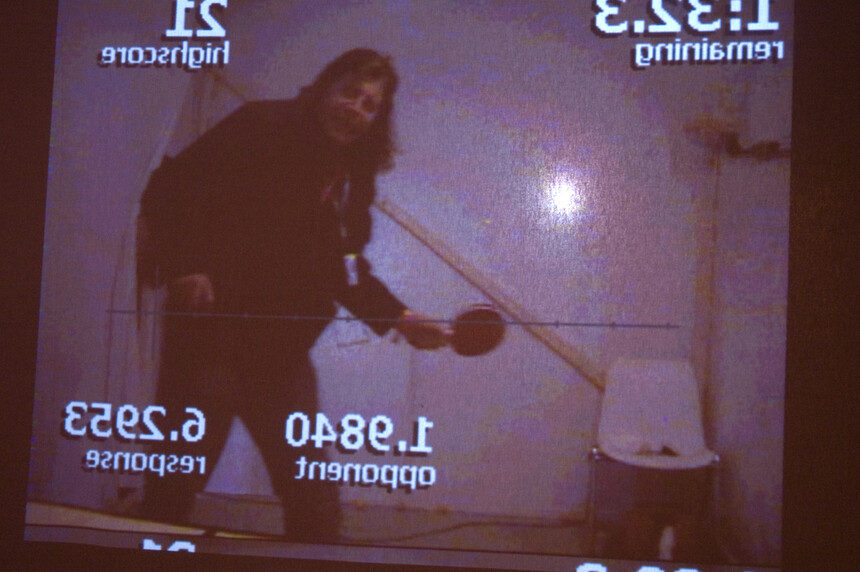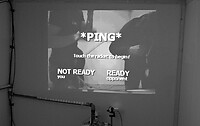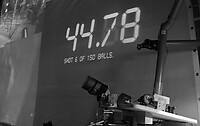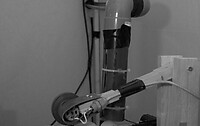PING
A real game of table tennis, with a remote physical opponent.
The installation consists of two identical separate spaces. Together these spaces form the “playground” of the ping installation. Each space contains a half pingpong-table, a pingpongball-canon, a bat with a touch-sensitive sensor, and a laptop. A network cable runs between the two rooms, transporting the signals of the bat sensors to the opposing canons. Furthermore, the rooms are connected by a video-link: each room has a camera which films the player and a beamer which projects the player from the other room. Additionally, this projection shows a graphical score of the game play and the response times of the players. Since the balls are only virtually transported to the opposing space, the actual physical ball will need to be picked up. This is why both canons have plenty of balls. During game breaks, the balls need to be loaded again into the canon.
History
The installation was exhibited on multiple places over the course of 2 years. Some of the bigger venues include Mediamatic Amsterdam; V2 in Rotterdam, Transmediale'09 sideshow in Berling and ISEA '08 Singapore.
The project has evolved from a tape-and-wood prototype into a compact, transportable, easy to setup installation.



